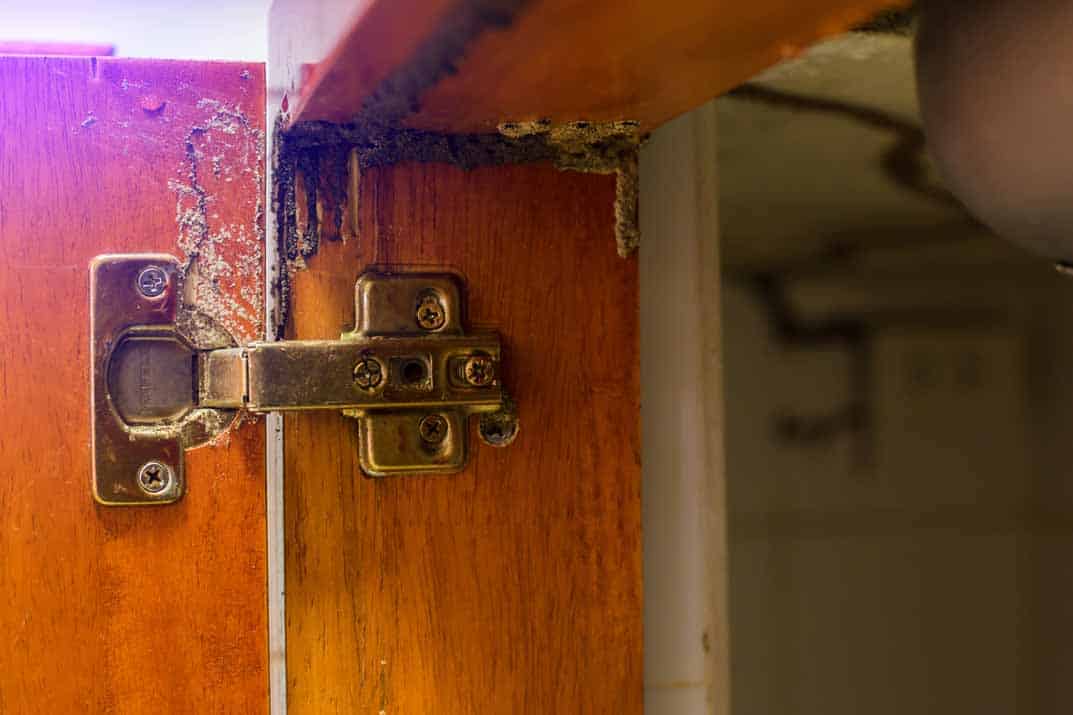If you’re a homeowner in Raleigh, NC, you probably have a mental checklist of things to watch out for in and around your house—leaky pipes, squeaky floors, and maybe even the odd raccoon sniffing around your trash. However, one often-overlooked threat that deserves immediate attention is termites. These tiny wood-destroying insects can silently tunnel through the structure of your home, causing long-term damage that might not be obvious until it’s too late.
We’ve seen firsthand how quickly a minor termite issue can escalate into a serious infestation. The good news is that early detection plays a pivotal role in minimizing damage (and the associated costs).
Why Recognizing Termite Signs Early Matters
Termites cause billions of dollars in property damage every year. According to the National Pest Management Association (NPMA), termites are responsible for more than $5 billion in damages annually in the United States. When an infestation goes unnoticed for months—or sometimes even years—the cost of repairs can skyrocket.
By spotting termites early, you can:
- Reduce Repair Costs: Catching an infestation at the start often means simpler, less invasive treatments.
- Preserve Property Value: A history of major termite damage can lower resale value, making an early catch a huge asset.
- Prevent Further Spread: Stopping termites in their tracks can prevent them from moving to other parts of your home or neighboring structures.
The Most Common Signs of a Termite Infestation
There are a few classic warning signs we recommend all homeowners keep an eye out for. These include:
- Discarded Wings: Swarmer termites (the ones that fly and reproduce) typically emerge in the spring. After swarming, they shed their wings. You might find small piles of these transparent wings near windowsills, doors, or any light sources.
- Mud Tubes: Subterranean termites often build mud tubes (thin, tunnel-like structures made of soil and saliva) to travel between their underground colonies and your home. These tubes can pop up near your home’s foundation, in crawl spaces, or anywhere termites need a protected path from the soil to the wood.
- Hollow-Sounding Wood: Termites eat wood from the inside out. If you tap on a beam, floorboard, or other wooden structure and notice a hollow sound, it might be a sign of termite galleries within.
Each of these signs, while seemingly minor, can be an early red flag that termites have entered your home. If you ever notice any of them—or even if you have a hunch—don’t ignore it. We always say we’d rather inspect and find no termites than discover a massive infestation when it’s too late.
Subtle Indicators That Often Go Overlooked
Beyond the usual suspects, there are some less obvious clues. Here are a few subtle indicators we’ve encountered during our inspections:
- Blisters in Wood Flooring: If a section of your floor feels soft, spongy, or looks blistered, it may indicate termites feeding below the surface.
- Peeling or Discolored Drywall: When termites travel through walls, they sometimes damage the paper layer of drywall, leading to bubbling paint or discoloration.
- Excessively Noisy Walls: While termites are often called “silent destroyers,” you might hear clicking or rustling sounds if you press your ear to a heavily infested wall. This sound comes from their chewing or from the soldiers banging their heads to signal danger to the colony.
- Tight-Fitting Doors and Windows: Termite activity can cause warping in wood frames. If a window or door suddenly becomes harder to open or close, it might be due to moisture changes caused by termites.
These signs can be easy to dismiss, particularly if you’re already dealing with a few household quirks. But remember, when it comes to termites, caution is your best friend.
What to Do if You Spot Possible Termite Activity
If you come across any suspicious signs, consider taking these steps:
- Document the Evidence: Snap a few photos or jot down where and when you noticed things like mud tubes or discarded wings. This will help our team (or any pest professional) to quickly pinpoint areas of concern during an inspection.
- Avoid Disturbing the Site: As tempting as it might be to break open a mud tube to see what’s inside, try not to disturb the area before a professional inspection. Disturbing active termite tubes can cause the colony to scatter, making it more difficult to track.
- Call a Professional: At Wake Pest, we always emphasize the importance of a professional termite inspection. We’ll be able to confirm whether you have an active infestation and recommend the most effective treatment options.
Time is of the essence. Termites can grow their colonies quickly, and each day of delay could mean more damage to your home. In our experience, it’s always better to be safe than sorry—especially when it comes to these relentless pests.
How We at Wake Pest Handle a Termite Inspection
We believe in a thorough, methodical approach to detecting termite activity. Here’s a quick rundown of what you can expect when we visit:
- Exterior Evaluation: We walk around your property to look for mud tubes, damaged wood, and any possible moisture issues that might attract termites (like clogged gutters or leaky spigots).
- Interior Inspection: We move indoors and check walls, floors, windowsills, and other susceptible areas. We’ll use specialized tools to probe for hollow-sounding wood.
- Moisture Meter Readings: In many cases, higher moisture content can indicate hidden termite or water damage. We use moisture meters to zero in on potential trouble spots behind walls or under floors.
- Customized Report and Recommendations: Once we’ve completed the inspection, we’ll give you a detailed report, outlining any findings and recommended next steps. If treatment is needed, we’ll tailor it to your home’s unique situation.
Common Misconceptions About Termite Signs
We get a lot of questions from concerned homeowners. One of the most frequent statements we hear is, “But my house is brand new—there can’t be termites!” While newer construction can sometimes be less prone to infestation, it’s certainly not termite-proof. Termites can invade even brand-new homes under the right conditions.
Another common misconception is that mud tubes or discarded wings are always near the foundation. While that’s often the case, termites can build tubes in crawl spaces, attics, and even behind walls—places you rarely see. That’s why routine inspections are so important, whether your home is old or new.
Proactive Measures to Keep Termites at Bay
Spotting termites early is great, but prevention is even better. To keep these pests from setting up shop in the first place:
- Repair Leaks Quickly: Termites thrive in moist environments, so fix any plumbing or roof leaks before they become an issue.
- Limit Wood-to-Soil Contact: Keep firewood, mulch, and wooden structures (like decks or fences) away from direct contact with soil.
- Improve Drainage: Ensure water is directed away from your foundation through proper grading and downspouts.
- Seal Entry Points: Patch up cracks and gaps in your foundation, especially around utility pipes, vents, and windows.
Making these small changes can significantly reduce the likelihood of a termite problem, saving you a lot of stress (and cash) down the road.
Staying Vigilant Year-Round
While termites are most active during warmer months, we advise homeowners to remain vigilant throughout the year. In North Carolina’s temperate climate, the transition between seasons can still provide enough warmth and humidity for termite activity—even during the cooler months. Checking your home at least once every quarter, or scheduling regular inspections with professionals like us, can help catch any signs before they spiral out of control.
Conclusion
Termites may be small, but the damage they can cause is anything but. Knowing the early warning signs—like discarded wings, mud tubes, hollow-sounding wood, and blistered floors—could make all the difference in protecting your home and wallet. The sooner you catch an infestation, the faster and easier it is to resolve.
If you’ve spotted any suspicious signs or just want the peace of mind that comes with a professional inspection, don’t hesitate to reach out to us at Wake Pest. Our Raleigh-based team is happy to chat with you, answer your questions, and, if needed, schedule a thorough inspection. With early detection and a proactive approach, you can keep these destructive invaders at bay and enjoy your home without the worry of termite damage lurking behind the walls.

